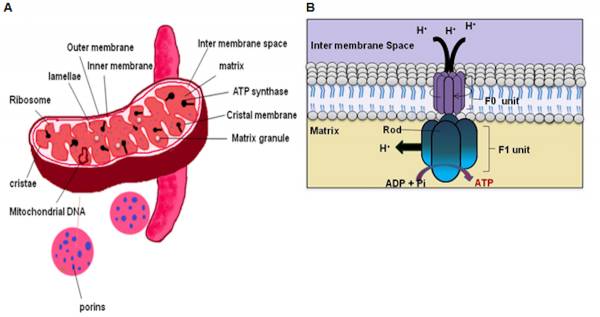Our stamina comes from our ability to produce energy efficiently over a period of time. In our muscles, energy production comes courtesy of mitochondria. The more mitochondria we have, the longer we can go. Endurance athletes may have twice the normal number in their muscles. The rest of us may be feeling the fatigue after a long walk, cycle, or run much quicker.
Our stamina comes from our ability to produce energy efficiently over a period of time. In our muscles, energy production comes courtesy of mitochondria. The more mitochondria we have, the longer we can go. Endurance athletes may have twice the normal number in their muscles. The rest of us may be feeling the fatigue after a long walk, cycle, or run much quicker.
Research1 out of the University of Southern Denmark Faculty of Health Sciences, examined 15 elite athletes and compared them with 29 people who were either sedentary or somewhat active. All subjects were given a muscle biopsy and their tissue samples were examined under an advanced microscope that can detect even the smallest changes in muscle structure. Within muscles, there is a folded inner membrane called the cristae. On the folds of the cristae is where mitochondrial energy production takes place. The researchers were aware that mitochondrial respiration varies. it was thought that this was impacted by cristae density in mammalian muscles. The research set out to understand the mechanisms at play.
In humans, the mitochondrial cristae density is not constant, but exhibits plasticity with long-term endurance training. The researchers showed that, at whole-body level, muscle mitochondrial cristae density is a better predictor of maximal oxygen uptake rate than muscle mitochondrial volume. So, if you raise your mitochondrial cristae density through training, you perform better, have greater metabolic capacity, and efficiently use your body’s fuel during prolonged periods of consistent activity.
“We’ve found that mitochondria in endurance athletes are constructed in such a way that they generate more energy than mitochondria in non-athletes. In fact, our measurements have shown us that these mitochondria can generate around 25% more energy. This gives a major advantage in endurance sports such as marathon running and cross-country skiing, but also in ball games like soccer,” says Joachim Nielsen, assistant professor of muscle physiology at University of Southern Denmark.
According to the researchers, it is still too early to say whether improved mitochondria is a genetic trait or the result of long term exercise. Although the team is working on the hypothesis that training over longer periods of time can produce the needed changes in the structure of mitochondria.

The structure of mitochondria and a view of ATP synthase (the process of creating energy)
“We took detailed measurements of each muscle fibre and saw that those muscle fibres that are typically most active during extended periods of physical activity are also those with the most significant changes in mitochondrial structure. We see this as a clear indication that the athletes have produced these changes themselves through their training,” explains Joachim Nielsen.
Reference
1. Joachim Nielsen, Kasper D. Gejl, Martin Hey-Mogensen, Hans-Christer Holmberg, Charlotte Suetta, Peter Krustrup, Coen P. H. Elemans, Niels Ørtenblad. Plasticity in mitochondrial cristae density allows metabolic capacity modulation in human skeletal muscle. The Journal of Physiology, 2016;






